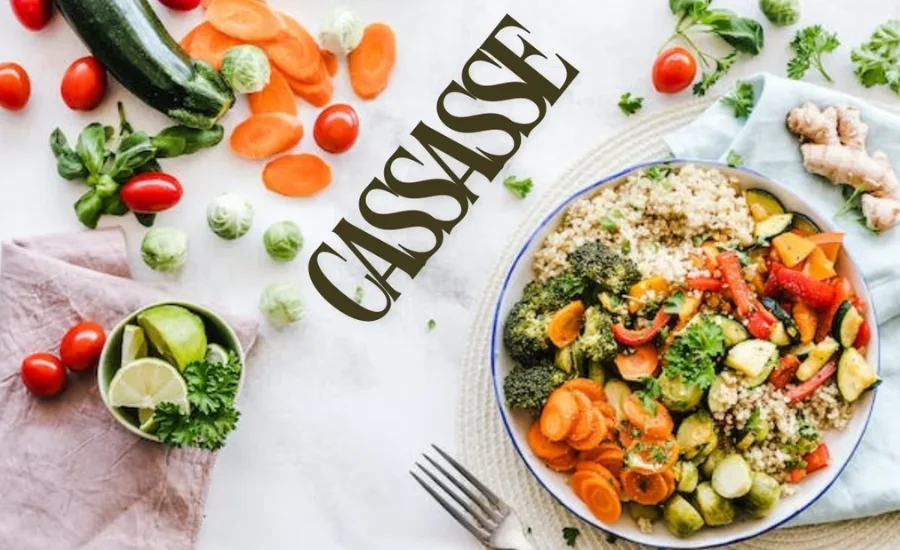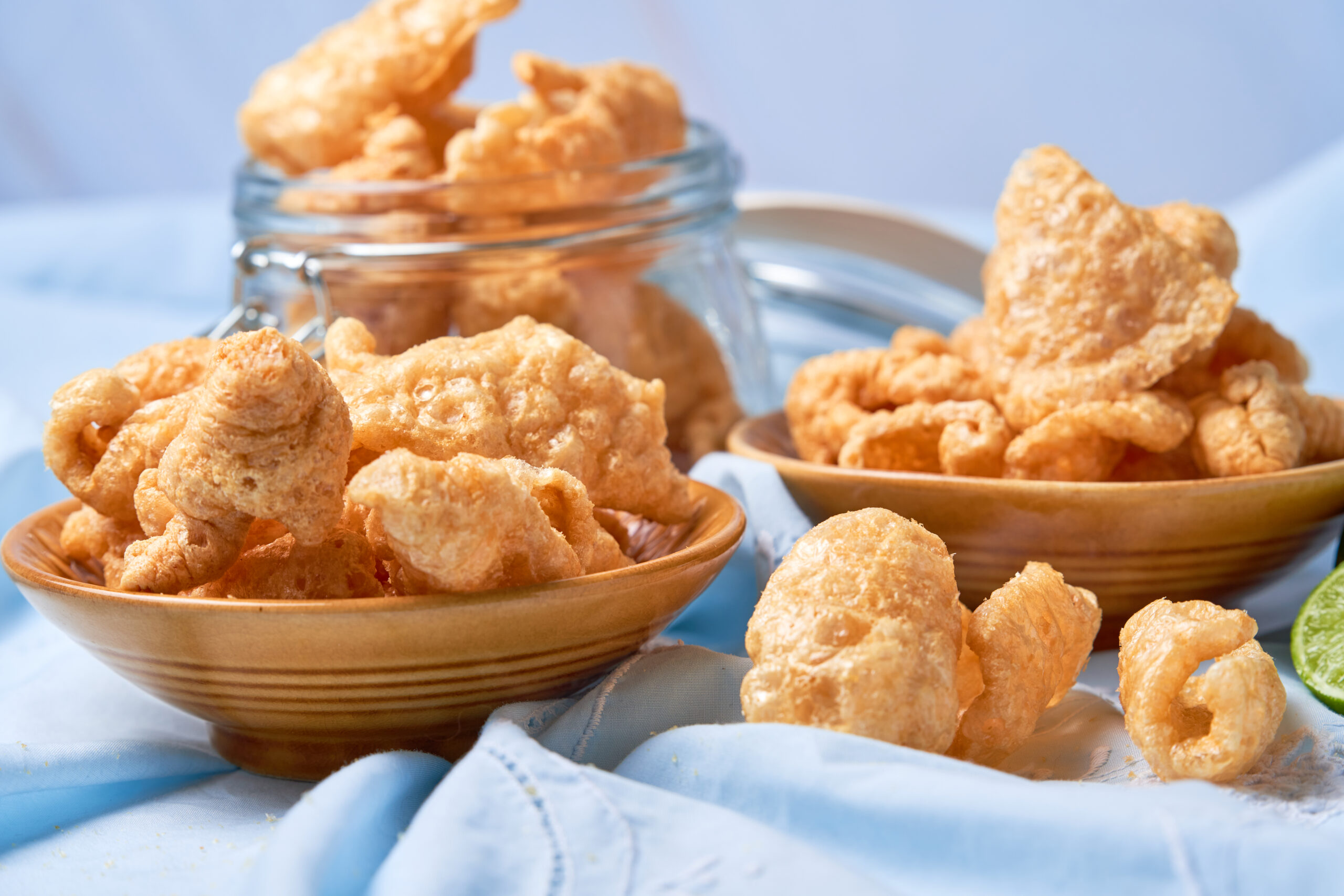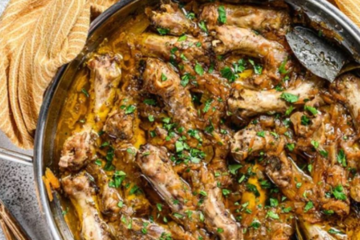Cassasse might be a term that’s unfamiliar to many, but it represents a delicious and unique food worth exploring.The ackee fruit is the next superfood to explore, so forget about quinoa and kale. Over 200 years have passed since ackee, a mainstay of Jamaican cuisine, originated in West Africa. This nutrient-dense fruit is loaded with carbohydrates that are good for you, protein, and vitamin C.
There are a few different methods for making cassasse: baking, cooking, or stewing. Indulging in this exotic delight will not only entice your palate but also let you impress your friends with your culinary prowess. Meals become more fascinating and pleasurable when you incorporate cassasse into your diet. It also adds a touch of the exotic into your life.
Definition of Cassasse
Cassasse is a traditional dish from [insert region where Cassasse originated], known for its vibrant and diverse culinary culture. Usually categorized as a stew, soup, or casserole, Cassasse features a unique blend of hearty textures and aromatic spices that delight the senses. This dish is loved for its [describe flavors or key characteristics, e.g., rich flavor, hearty texture, unique blend of spices], making it a favorite in many households and a highlight of regional cuisine.
Origins
Cassasse has roots in ancient civilizations and became a staple dish across various cultures. While its exact origin is somewhat unclear, historians believe it likely began in the fertile crescent of Mesopotamia, where early farming communities grew grains like wheat and barley.
The Beginnings of Cassasse
A variety of mahogany tree indigenous to the Caribbean, Central America, and South America is also referred to as cassasse. The wood of this tree is highly valued for its endurance and quality; in the past, Spanish explorers and the Arawak people utilized it to make furniture, canoes, dwellings, and musical instruments. Unfortunately, overexploitation has put the tree in danger of extinction.
Additionally, the Cassasse tree produces edible, nutritious fruit with a savory, bitter taste. This fruit has been used for millennia in many parts of the world to make juices, jams, and tonics. The Cassasse tree is a precious natural resource that should be protected since it has great cultural and historical significance for the people of the Americas and the Caribbean.
The Rise of Cassasse
As civilizations spread across continents, cassasse evolved alongside them, adapting to local tastes and culinary traditions. In ancient Egypt, cassasse took the form of “kisra,” a thin, unleavened bread made from sorghum or millet. In medieval Europe, it transformed into hearty loaves of bread that sustained both peasants and nobles through harsh winters and bountiful harvests.
The Art of Cassasse Making
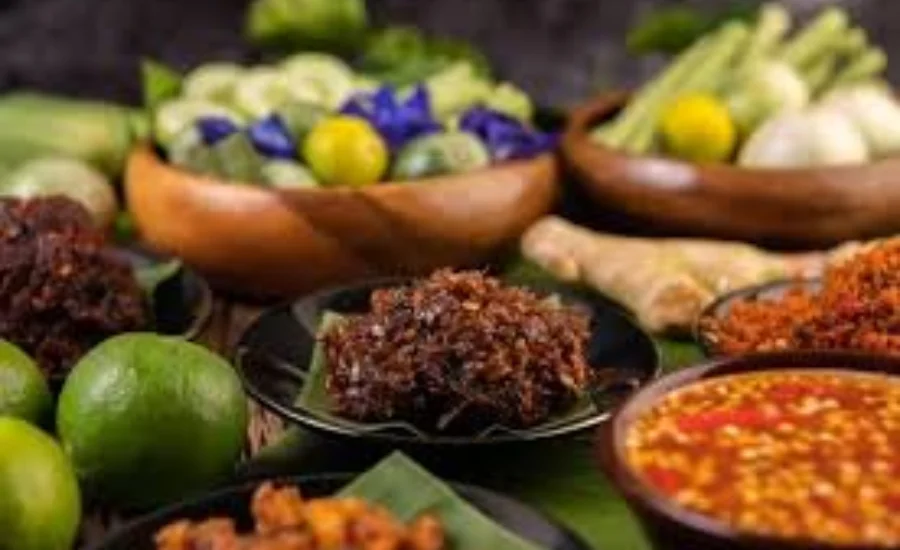
Central to the charm of cassasse is the intricate art of its preparation. A thorough awareness of culinary skills, talent, and patience are required to produce cassasse, from the perfect blending and kneading of the dough to the careful selection of the best ingredients. Traditionally, cassasse is made with basic components like flour, water, salt, and yeast; nevertheless, the artisan’s skill is what turns these ingredients into a delicious masterpiece.
Benefits of Cassasse
Packed with Nutrients: Cassasse, made from cassava, is a nutritional powerhouse. It’s rich in vitamins C and B6, and minerals like manganese and folate, which help boost your immune system, keep your skin healthy, and support energy metabolism.
Great for Gluten-Free Diets: For those who can’t tolerate gluten or have celiac disease, cassasse is a perfect choice. Since it’s made with cassava flour, it offers a tasty and safe alternative to traditional baked goods without sacrificing flavor or texture.
Versatile and Delicious: Cassasse is wonderfully versatile. Whether you bake it, fry it, or steam it, it can be enjoyed as both a sweet and savory dish. Its flexibility in cooking methods and flavor profiles makes it a favorite in many cultures, adding variety and enjoyment to meals while providing good nutrition.
A Feast for the Senses
The aroma of freshly baked cassasse is enough to tantalize the senses and stir the appetite. With its golden crust and smooth crumb, cassasse delights taste buds with a blend of nutty, earthy, and subtly sweet flavors. Enjoyed on its own or paired with savory accompaniments like cheese, olives, or cured meats, cassasse invites culinary exploration and discovery.
Cassasse in Cultural Context
Beyond its culinary appeal, cassasse holds deep cultural and symbolic significance for communities around the world. In many societies, cassasse is more than just a meal—it’s a sacred ritual that symbolizes unity, abundance, and connection with the divine. From ancient fertility rites to modern-day celebrations, cassasse remains an integral part of festivals, weddings, and spiritual ceremonies, preserving cultural heritage and connecting generations.
The Legacy of Cassasse
In a day of fast meals and instant satisfaction, cassasse is a symbol of human perseverance and inventiveness. It serves as a reminder of the ageless virtues of perseverance, skill, and reverence for customs. Cassasse is still a source of inspiration, nourishment, and joy—it can be consumed at a family table or in a busy bakery—enriching lives and creating connections that cut beyond boundaries of time and space.
Explore Delicious Cassasse Recipes & Meal Planning Tips
Classic Cassasse Recipe
Indulge in the timeless flavors of Classic Cassasse, a dish rich in cultural heritage and culinary tradition. Begin by gathering the essential ingredients, including [list ingredients]. Follow the detailed step-by-step instructions to achieve a golden-brown crust and a perfectly smooth crumb that will delight your taste buds. For a personalized touch, consider experimenting with ingredient substitutions and variations to tailor the recipe to your preferences. Whether enjoyed as a standalone treat or paired with savory accompaniments like cheese or cured meats, Classic Cassasse promises a delightful culinary experience.
Vegetarian Cassasse Option
For those preferring a meat-free alternative, the Vegetarian Cassasse recipe offers a delectable twist on this classic dish. Featuring [list vegetarian-friendly ingredients], this version maintains the hearty textures and savory flavors of traditional cassasse without meat. Detailed cooking instructions guide you through each step, ensuring a satisfying outcome. Enhance the dish with seasonal vegetables and herbs to infuse freshness and nutritional value. Whether preparing it for a family dinner or a gathering of friends, Vegetarian Cassasse is sure to impress with its versatility and wholesome taste.
Mediterranean-Inspired Cassasse Variation
Transport your taste buds to the sun-drenched shores of the Mediterranean with this inspired variation of Cassasse. Incorporating [list Mediterranean ingredients], this recipe adds a flavorful twist to the classic dish. Follow the step-by-step guide to masterfully blend Mediterranean flavors into every bite. Perfect for exploring new culinary horizons, this rendition of Cassasse brings together the best of both worlds—time-honored tradition and modern Mediterranean zest. Ideal for a leisurely meal or a festive occasion, Mediterranean-Inspired Cassasse promises to elevate your dining experience with its aromatic spices and vibrant ingredients.
Preserving the Tradition of Cassasse
In today’s interconnected world dominated by mass production, preserving the rich tradition of cassasse presents a significant challenge. However, passionate artisans, chefs, and cultural enthusiasts worldwide are dedicated to safeguarding this culinary heritage for future generations. Through initiatives like historical exhibitions, culinary workshops, and apprenticeships, they strive to ensure that the art of cassasse making remains vibrant and cherished. These efforts serve not only to preserve cultural pride but also to maintain a distinct culinary identity rooted in history and tradition.
Culinary Legacy and Cultural Significance
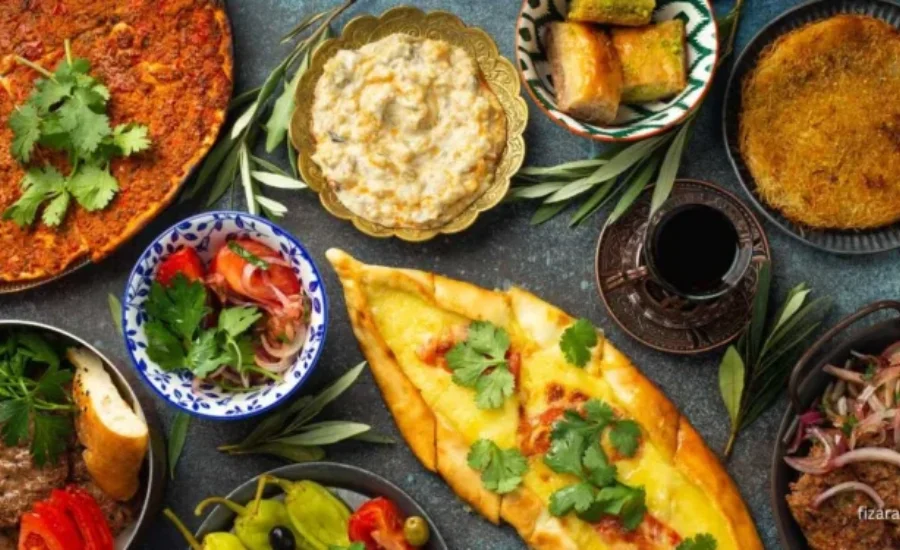
Beyond its gastronomic appeal, cassasse holds profound cultural significance as a symbol of community, tradition, and heritage.Cassasse comes from [insert region], and it has travelled across time and space to become a beloved component of customs and festivities there. In addition to reflecting local gastronomic tastes, its preparation highlights the inventiveness and tenacity of the communities that have managed to maintain its tradition. To ensure that cassasse continues to be a source of pride and connection for future generations, chefs and artisans continue to innovate while upholding time-honored techniques in their role as custodians of this culinary art form.
Exploring the Key Ingredients of Cassasse: A Taste of the Caribbean
Cassasse is a dish that thrives on its versatility, welcoming a diverse array of ingredients that cater to individual tastes. At its heart is cassava, a staple root vegetable found throughout the Caribbean. Known for its neutral flavor and satisfying texture, cassava forms the essential base of this unique culinary creation.
Cassasse has a plethora of flavors and sensations that go beyond cassava. Together with the creamy richness of coconut milk, it contains a variety of veggies and herbs like onions, garlic, potatoes, sweet potatoes, parsley, scallions, and thyme. These components work in unison to produce a dish that is full of bright Caribbean tastes and hearty as well.
Cassasse is a delightful side dish that goes well with any meal. It is typically served with fish or meat and rice. It’s a flexible option that may be enjoyed simply with rice or partnered with tofu for vegetarian satisfaction. It can also be adjusted to suit a variety of dietary requirements.
Whether prepared for a festive gathering or a cozy family dinner, cassasse embodies the spirit of Caribbean cuisine. It celebrates local ingredients while inviting creativity in the kitchen, ensuring each dish is a delightful exploration of flavors that resonate with Caribbean heritage.
How to Prepare Cassasse: A Flavorful Caribbean Delight
Cassasse, a beloved Caribbean dish with deep African roots, is a hearty stew renowned for its rich blend of meats, vegetables, tubers, and seasonings simmered in a savory tomato-based sauce. Known by various names across different islands—such as callaloo in Trinidad and Tobago, fish brew in Barbados, or kub kak in the Virgin Islands—the cooking method remains consistent throughout the region. Here’s a step-by-step guide to preparing this culinary delight:
- Prepare the Meat: Start by washing and cutting your choice of meat into bite-sized pieces. This can include salted pigtail, salt beef, cow foot, or any preferred meat option.
- Prepare the Roots: Peel and chop starchy root vegetables like yuca (cassava), green bananas, or other local tubers into manageable pieces.
- Prepare the Vegetables: Wash and slice additional vegetables such as plantains, okra, carrots, peppers, onions, or any desired vegetables.
- Brown the Meat: Heat oil in a large pot over medium-high heat. Add the meat pieces and cook for approximately 15 minutes, turning occasionally to ensure they are evenly browned.
- Simmer with Liquid: Add enough water or broth to cover the meat completely. Bring the liquid to a boil, then reduce the heat and simmer for approximately one hour, or until the meat becomes tender.
- Add Tubers: Introduce the prepared tubers to the pot. If needed, add more water or broth to cover the ingredients. Bring the mixture to a boil again, then simmer for an additional 15 minutes until the roots reach desired softness.
- Incorporate Vegetables: Add the sliced vegetables to the pot and continue to simmer for about 10 minutes, or until the vegetables are cooked but still retain a firm texture.
- Serve and Enjoy: Serve cassasse hot alongside rice or bread to fully appreciate its flavorful essence. Whether enjoyed at a festive gathering or a cozy family meal, cassasse offers a taste of Caribbean tradition and culinary excellence.
By following these simple steps, you can recreate this traditional dish and savor its robust flavors, steeped in cultural heritage and culinary craftsmanship.
Exploring the Art of Baking Cassasse
Baking cassasse is a culinary journey that brings forth the rich flavors and textures of this traditional Angolan dish. To start, the cassava mixture is poured into a prepared baking tin and smoothed to ensure even baking. The cake bakes in the oven until golden brown, and a toothpick inserted into the center comes out clean. It’s crucial not to open the oven frequently during baking to prevent the cake from collapsing.
Noteworthy Cassasse Recipes

For those eager to recreate the magic of cassasse at home, several recipes provide step-by-step instructions. A classic cassasse recipe typically involves grating cassava and mixing it with coconut milk and spices before baking or steaming until fully cooked. Modern variations cater to different dietary preferences, offering options for vegetarians and vegans alike.
The Traditional Dish of Angola
Cassasse is a basic meal that originated in Angola, Southern Africa. It is mostly comprised of cassava flour and water, with the addition of salt or spices for flavor. The mixture thickens and becomes paste-like as it cooks. Cassasse is often eaten as an accompaniment to robust stews, grilled meats, or savory seafood preparations. It can also be used as a side dish during main meals.
Cassasse’s simplicity and adaptability, which capture the spirit of traditional African food while catering to contemporary tastes and dietary requirements, continue to attract diners in Angola and beyond.
Discovering Authentic Cassasse: Where to Find the Best
If you’re seeking the authentic flavors of cassasse, a Caribbean delicacy, the best place to indulge is undoubtedly within the Caribbean itself. However, for those in Texas looking to savor this distinctive dish, several restaurants offer a taste of the genuine article. One notable establishment is Island Resonation Caribbean Food in Houston, a family-owned restaurant renowned for its authentic Caribbean cuisine, including cassasse. Another excellent choice is D Caribbean Curry Spot Food, also located in Texas, where you can enjoy their flavorful rendition of cassasse.
Mastering the Art of Cooking Cassasse: Tips and Techniques
Preparing cassasse is an art that requires precision and skill. Elevate your culinary prowess by employing specific cooking techniques, such as [mention techniques], to enhance the dish’s flavors and textures. When serving cassasse, consider [suggest serving options], which can complement its robust flavors and enrich the dining experience.
The Evolving Future of Cassasse

As culinary tastes evolve, so does the future of cassasse. While traditional recipes remain cherished, there is ample room for innovation to cater to modern palates. Moreover, efforts in conservation and sustainability aim to preserve the authenticity of cassasse, ensuring that future generations can continue to appreciate this flavorful and culturally significant dish.
You May ALso Like: Çeciir
Final Words
Cassasse is a versatile and nutritious dish deeply rooted in African and Caribbean culinary traditions. Made primarily from cassava, a staple root vegetable in these regions, cassasse boasts a neutral flavor and satisfying texture, making it a canvas for various culinary creations. It can be baked, cooked, or stewed, each method enhancing its unique characteristics and offering endless possibilities for delicious meals.
Nutritionally, cassasse is a powerhouse, rich in vitamins C and B6, and essential minerals like manganese and folate, which support immune health, skin vitality, and energy metabolism. This makes it an excellent choice for those on gluten-free diets, providing a safe and tasty alternative to traditional wheat-based dishes.
Cassasse’s preparation often involves blending cassava with coconut milk, spices, and other vegetables, creating a dish that is both hearty and flavorful. It pairs well with savory accompaniments such as fish, meat, or tofu, making it a versatile addition to any meal. Beyond its nutritional benefits, cassasse holds cultural significance, symbolizing unity and tradition in many communities. Whether enjoyed at festive gatherings or cozy family dinners, cassasse invites culinary exploration and celebrates a rich heritage of flavors and customs.
For More Interesting Food Articles Visit Alevemnte.

